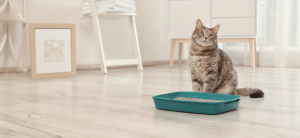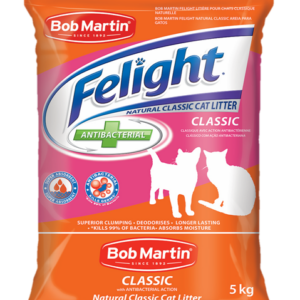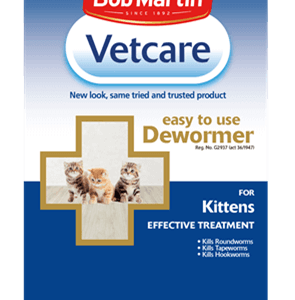So your Best Friend won’t stop scratching? Itchy skin and discomfort might be a sign that your dog has fleas and its time to take action with Bob Martin.
If any of the below signs are prevalent in your pet they may have fleas:
- Increased irritability on the skin
- Looks for cold places to stay on to relieve the itchiness
- Suffers from secondary skin infections
- Shows signs of small and red flea bites on their skin
If the symptoms above sound familiar, inspect your friend with a flea comb. Fleas are tiny but visible to the human eye when inspected closely.
Fleas are very small (1mm – 4mm) and cats are good groomers. This makes spotting fleas difficult, but if you nod your head to more than one of the following points it’s a good idea to treat your friend with one of BOB MARTIN’s Tick and Flea Products for Cats:
- Intense scratching and biting of their coat
- Excessive grooming
- Hair loss and bald patches
- Avoidance of certain rooms in your home (fleas like carpeted rooms – your cat will avoid these rooms)
- Agitation and restlessness
- Red and inflamed bumps
- Lethargy (your friend might seem even more lazy than usual)
- Tiny peppercorn-specks on your cat’s fur (this is flea “dirt”).
Don’t rush to pull out this nasty monster – you might cause more harm as its mouth-part might break off and get left behind. This can cause a serious infection.
The best way to remove a tick is to grasp the tick firmly with tweezers as close as possible to where it is attached to the skin. Slowly and steadily pull the tick straight up.
Remember! If Felix has a flea or tick you need to treat all the animals in your home!
Outdoor cats and dogs especially those that hunt will need more regular and thorough flea control than an indoor pet or one that just steps out into the garden. Depending on how serious the flea infestation is, we would recommend the following action.
- Give some instant relief with tick and flea shampoo (available for cats & dogs) or tick and flea dip (dogs only).
- Follow up with a Spot on, this will continue to kill fleas and ticks for 5 weeks (available for both cats & dogs).
- Fit a tick and flea collar to extend the protection period between treatments (available for both cats & dogs).
- In the meantime, wash the pets bedding over 40⁰c, vacuum wherever you can (you can apply tick and flea powder and let it sit for a while before you vacuum), paying attention to warm, dark, protected areas – a flea’s idea of a perfect home!
- Don’t forget to deworm your pet regularly as fleas and a certain type of tapeworm go hand in hand (available for both dogs & cats).
! Always read the instruction of a product prior to use for your family and pets safety.
If you continue to find fleas on your pet after correctly applying the treatment, this is probably because of flea eggs hatching and growing into adult fleas in the home. Some forms of the flea life cycle are resistant to even the best household sprays, so you’ll still get fleas developing for up to three months after your house and cat have been treated. As long as you follow the instructions and use the product correctly, you should see a vast reduction in fleas within the first month, and in most cases, an elimination of the problem after three months.
Keep treating the home accordingly and re-treat your pet if necessary. This can be done 1 week after initial application of the Spot On. For more advice, contact our consumer care line.
If you find a tick on your pet, it’s best to remove it as soon as possible as it can spread disease. If you’ve never removed a tick before, or you’re unsure how to do it, you should consult your vet who can show you – if you don’t remove the tick properly you risk leaving the head buried beneath the skin, which can result in a nasty abscess.
The best tool to use is a specially designed tick remover. This hooks under the body of the tick and will remove the tick whole with a gentle twist.
It’s very quick and easy to do.
Alternatively, you can use tweezers, but make sure you always twist, rather than pull the tick out. Once removed, check the tick is whole, then soak it in alcohol to kill it or squash it in tissue and dispose of it, be careful as engorged ticks will contain potentially infected blood. You do not want this to splatter on you when crushed. Do not crush the tick with your fingers and do not allow the crushed tick or the blood it carried to contact your skin.
It was once thought that you should burn the tick or rub it in alcohol before it’s removed. This has been proven to stress the tick and increase the likelihood of spreading blood borne diseases, so this is no longer recommended.
Occasionally, your pet may get a small, localised swelling where the tick was removed. As long as the tick has been completely removed and your cat isn’t bothered by it, the swelling should disappear within a couple of months.
When we are busy trying to eliminate a flea problem, most owners remember to treat their pets for fleas, but often forget to use flea treatment for the home.
There are usually many more fleas in the home that on the pet so treatment is vital.
Here are our top 10 tips to help you:
Check your pet. If you see fleas on your pet then they’ll definitely be in your home too. Just 5% of the flea’s life cycle takes place on the pet, meaning 95% of it occurs in the home.
It’s not just carpets. Even wood or laminate flooring can play host to flea eggs. So just because you don’t have carpet, it doesn’t mean you don’t need to treat your home.
Move the furniture. Make sure that you move your furniture and treat underneath it. Flea larvae won’t just be present in the places you can see.
Don’t forget the curtains. Make sure you treat and vacuum your curtains, as well as down the back and sides of your sofa.
Vacuum the entire home. Make sure that you vacuum the entire home and throw the bag away once you are finished.
Prevention is better than cure. The best flea treatment for your home is to stop your pets getting fleas in the first place. Treat your pet at regular intervals with a good quality spot on which will kill adult fleas and stop eggs and larvae from developing.
With the warmth, unfortunately, comes fleas, the best way to deal with this is to try and prevent them in the first place.
But first, know your enemy. Here are some helpful facts about the critters, along with methods for avoiding them:
Fleas like it warm. They prefer temperatures of over 20°C, which is why they tend to flourish in the summer.
Fleas will bed down with your pet. Fleas love your pet’s bedding. If you’re worried about an infestation make sure you wash the entire thing, not just the cover at a temperature above 40° C. If this isn’t possible, it might be best to buy a new one.
Fleas carry disease. Fleas aren’t just an itchy nuisance; they can spread some nasty diseases, make sure everyone stays healthy by treating your pet – and home – for fleas regularly.
Fleas can cause anaemia. In young animals, a severe flea infestation can cause anaemia. Regularly check your pet’s gums – if they’re pale pink or white, it could be time to see a vet.
Fleas can lay eggs anywhere in your home. You need to treat your entire home for fleas, not just your pet’s bed. You’ll never truly get rid of a flea infestation unless you destroy every last egg. They particularly enjoy floorboard cracks, skirting boards and underneath furniture.
Fleas can go unnoticed. When you’ve owned a pet for a while, you become less responsive to flea bites, which means you may not notice an infestation in your home. Stay aware and take action if you think you have a problem.
Photo by Brianna Tucker on Unsplash







